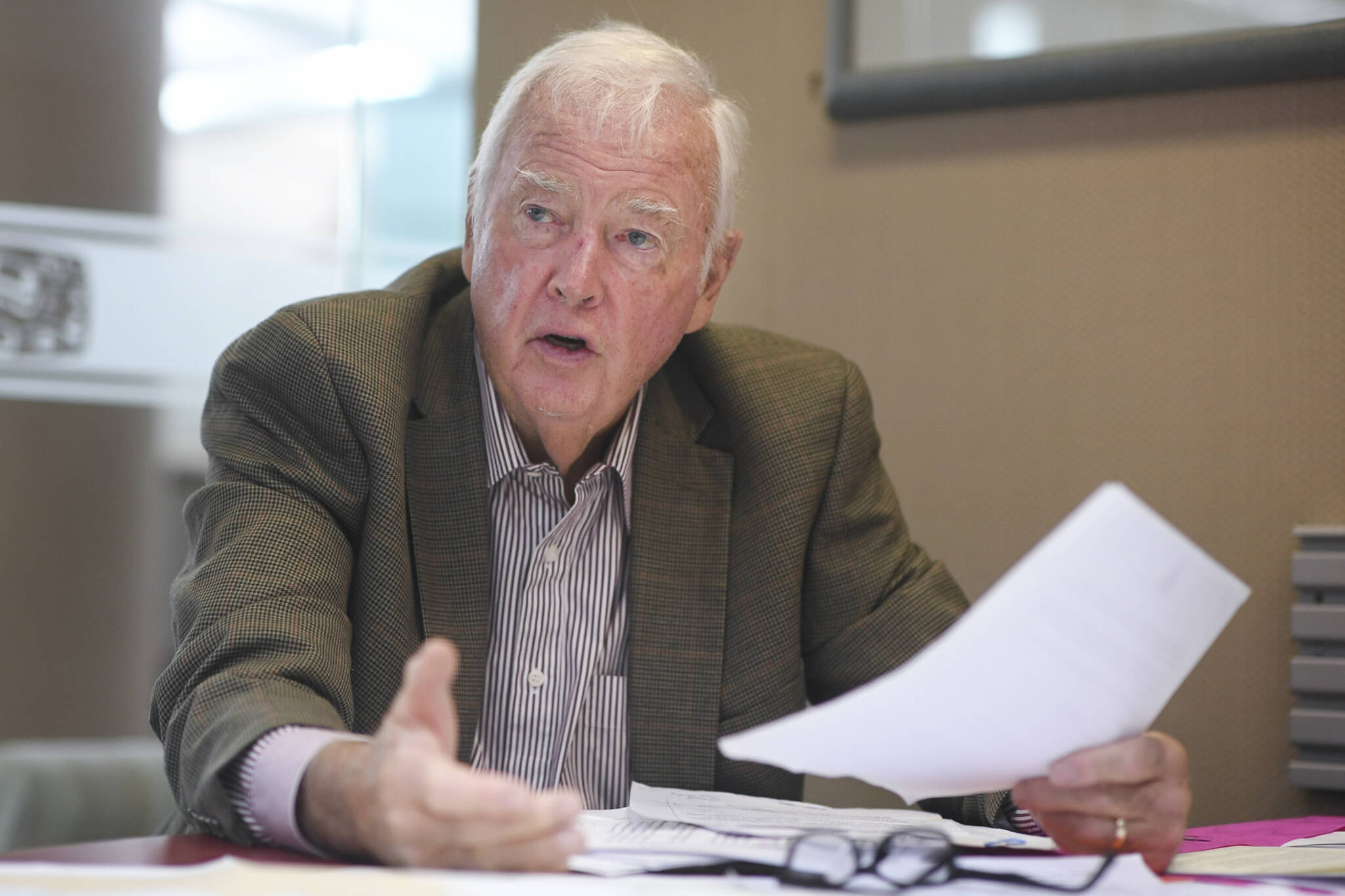Are we really running 0ut of gas at Cook Inlet? Are there some alternatives, could we consider a rail line to the North Slope to access our Arctic gas?
Alaska has been dealt a rough hand by President Biden and his administration. The politicized explanation, which is focused on global warming, is designed to motivate America’s youth at the polls. This activity will be with us for quite a while. In the meantime, we should be prioritizing attainable and meaningful resource related projects, whose time for development will eventually occur.
Most expert energy analysts agree that the remaining supplies of gas in Cook Inlet are inadequate to meet future Rail Belt demands, Anchorage and Fairbanks. The cost of exploring for and producing additional reserves to replace the collapsing production will become increasingly uneconomic. They tell us new sources of energy must be developed to avoid disruptions and any delay in making choices is no longer an option.
In 2023 the governor formed an Energy Task Force, tasked with evaluating options. One was to support the AK LNG Project. Another was to develop a smaller diameter “bullet line.” And a third option, to consider the importation of gas from outside suppliers. Additionally, a “robust analysis of alternative (renewable) sources for heat and base load power” would also be considered.
Several governors have looked at AK LNG, a large diameter, $40 billion plus pipeline from the North Slope to Kenai. So far large corporations like Exxon, ConocoPhillips and Hilcorp have declined investing in the concept, indicating the risk is too high under their strategic forecasting scenarios of global LNG supply and demand.
The second recommendation is an 800-mile “bullet line.” Estimated at about $10.5 billion. The bullet line has no business case and could not be amortized in a conforming way. The cost would be passed directly on to the rate payers or paid for by increasingly empty State coffers or perhaps by dipping into the permanent fund.
Another option appears to be available to us. Importing LNG from foreign sources. Mexico and Canada have gas that could potentially be available to Alaskans, but we would need to commit to investing in expensive import infrastructure that will significantly increase the cost of energy in the state while offering no long-term solution.
The governor’s Task Force reported “If the AKLNG project does not proceed, the Bullet Line and the alternatives should be compared and a decision made based on the long term goal of providing energy that is affordable, reliable and preferably sourced in-state such that the projects can be constructed and the energy will be available prior to the time that the Cook Inlet gas shortage is forecast to become significant (early 2030’s) ….
“Without taking action now to progress project concepts to a decision making point, there is a significant risk that near term importation of natural gas will become the long term default solution.”
There is another option before us. A 450-mile rail extension from Fairbanks to the North Slope. For about the same price as a bullet line, $10.5 billion, we could build infrastructure with a much broader economic purpose.
In addition to satisfying the Railbelt’s gas demands and reducing a need for long term imports, rail would significantly reduce the cost of exploration and operations for North Slope operators to economically recover significantly more reserves. Rail would allow the development of a world class petrochemicals industry with some of the cheapest feedstock gas on the planet, with a method to get the refined product such as methane, ammonia, hydrogen, etc., to tidewater and access the lucrative Pacific Rim markets.
As throughput on TAPS falls below 300,000 bbls/d we risk having to shut it down and scrap it. Rail could allow us to get every drop out of the North Slope and we could consider, if technically possible, turning TAPS into a dry gas line. Rail could significantly improve the economics and prospects for Alaska’s critical minerals industry as rail would pass through the Ambler mining district and take pressure off Alaskan roads by alleviating some trucking. Gas would be moved in iso containers, which could be offloaded at points such as the Yukon River bridge to supply rural Alaskan’s with cheap, clean gas to offset diesel use. A railroad could support future defense department interests. Perhaps even supporting the development of an Arctic Port. And it goes without saying that until battery storage improves, renewables cannot succeed in Alaska without natural gas backup.
What is most significant is that this project, unlike the bullet line, AK LNG, importing foreign gas or exploring for more scarce Cook inlet gas, rail can be paid for with revenue bonds. The railroad has the bonding capacity to issue up to $20 billion. We as ratepayers won’t be directly burdened by this option, instead the producers, the support industry, the military, the mining industry, and a new petrochemicals industry will support the amortization.
Rail as the solution for our current energy crisis, provides the state an opportunity to significantly advance our state’s energy security and economic future. It will provide hundreds of permanent jobs, a transformational opportunity to bring energy costs down to a level where Alaskans can develop value-added industries and monetize our own Alaska gas resources instead of the gas coming in from our neighbors either in Mexico or Canada.
I encourage the administration and the AKRR to consider my suggestions. The reality appears that we have very few alternatives.
Frank Murkowski served as Alaska’s eighth governor and represented the state in the U.S. Senate from 1981-2002.



